 |
surfresearch.com.au
bob mctavish
: spoon buiding, 1977 |
| home | catalogue | history | references | appendix |
|
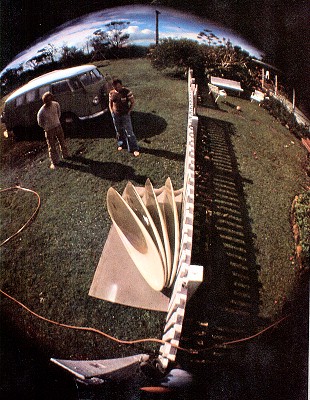
But!
Being the only fully flexible surfboard,
they can tap the juice and fit the required radius better than anything
else on the water, bar none.
So the spoon rider quickly becomes
the dedicated spoon freak.
'Next problem is getting one,No one
likes to make them commercially because they are a real hassle.
Also, few people know what makes
them tick.
This Winter I found the old slump
hit harder than usual so foolishly I bit off a few Greenough spoons - seven
in all, I've spent six or seven or eight winters with George here and in
California, seen him put together a few spoons.
They've always fascinated me, so
that's why I did it.
Here's what's involved:-
First, shape the bottom - which involves selecting the right blank, doing a tricky outline, shaping a graceful bowl and pure planing area.
Next, glass the bottom.
Three layers full length, then 5
layers getting progressively shorter, so you have eight in the tail, five
in the nose.
Then trim -not easy.
Also all glassing has to be dry
so it can flex and not shatter.
Next, plane off the excess deck foam,
then hollow the deck with a grinder, a nasty business which results in
getting covered in fine clingy dust that does wonders for your eyes.
When you recover, finish shaping
inside the deck - also difficult.
Tried getting a sheet of 40 grit
paper inside a bowl - so now youve caused a blank to virtually disappear
into dust.
A whole blank.
A lot of shaping!
Now glass the deck in a repeat of
the bottom.
This time you work inside the bowl
and keep it dry - very hard.
And squeegees don't like to bend
that much either.
After a thin filler coat, grind the
whole thing, putting flex into the corners.
This means tapering those sixteen
layers in the tail back down to three at the trailing edge -yes, three.
Then sand it, hand sand it, tune the fin.
Spread a very thin gloss, then wet and dry most of it off - once again excess resin will shatter.
Then with pressure-paks, colour the
monster the design of your choice.
Add to this the secret weapon, the
rovings torsion bar glassed into the deck rails.
Also if it's a "Chine " you have
to build up a sharp release edge out of "Mickey", "Mud", good old body
putty.
Plus the finished item sometimes
needs tuning after a few surfs.
The first one came back to get half
an inch off the fin and more flex in the tail.
See why they are a Winter delight
- Also see what a bargain you get for $165 -$185 - - But a well made spoon
will last for years, they're as strong as steel.
There's more to the spoon than meets the eye, and more to spoon riding also - it's tomorrow's surfing today, when it's done right.
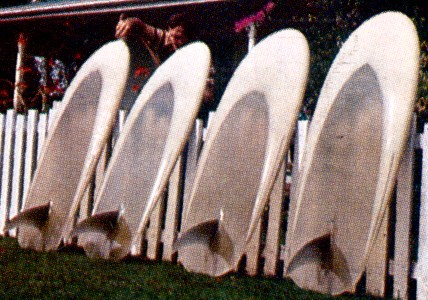
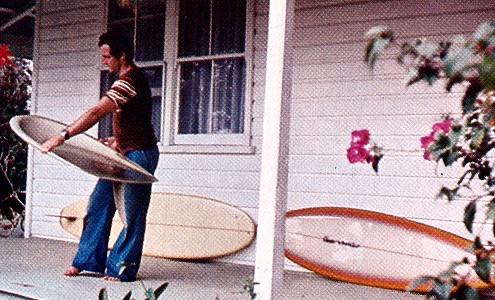 |
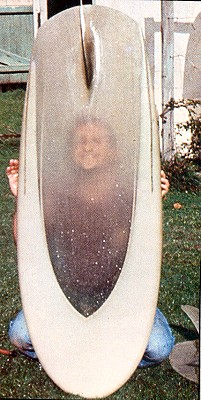 |
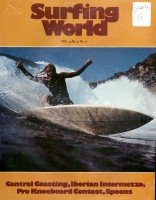

| home | catalogue | history | references | appendix |